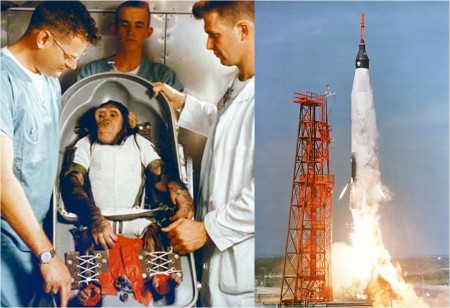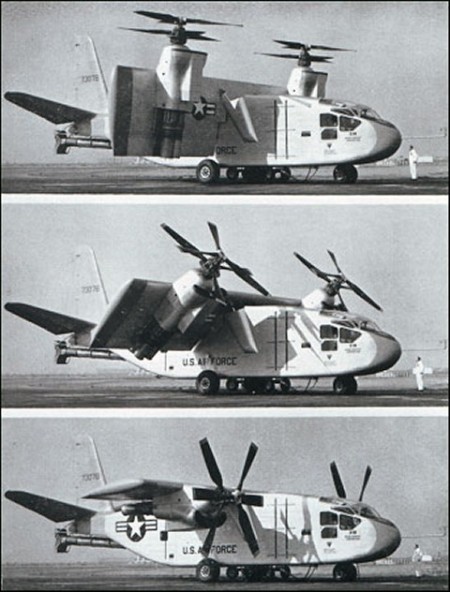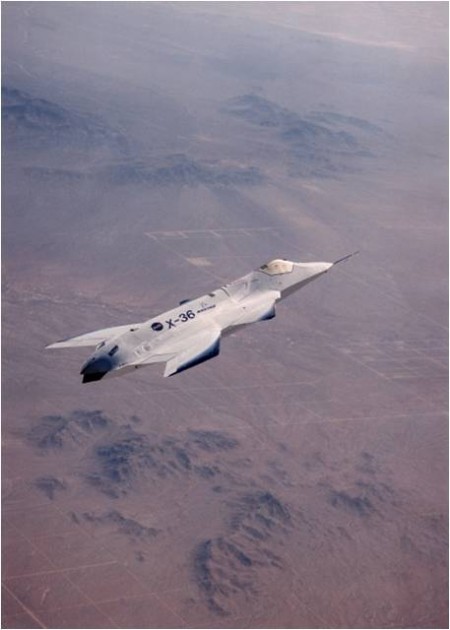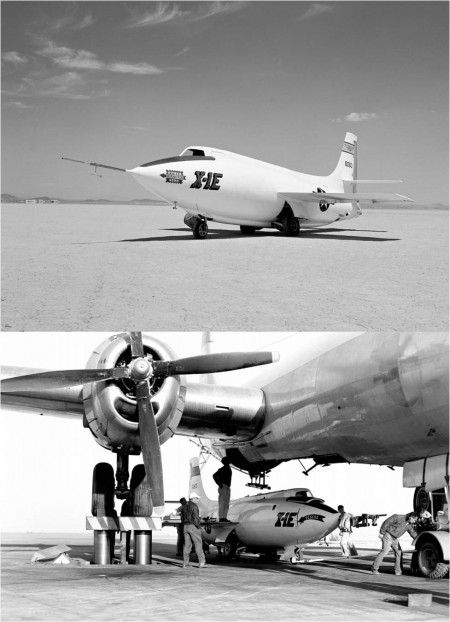
Fifty-one years ago this month, a Cameroonian chimpanzee by the name of Enos successfully flew a two-orbit mission around the Earth during the flight of Mercury-Atlas 5 (MA-5). This important mission paved the way for America’s first manned orbital spaceflight in February of 1962.
Project Mercury was the United States’ first manned spaceflight program. It consisted of two (2) suborbital and four (4) orbital manned missions flown between May 1961 and May 1963. These manned missions were preceded by animal flights in which chimpanzees served as surrogates for human crew.
A chimp named HAM successfully flew a suborbital Mercury mission in January of 1961. Known as Mercury-Redstone 2 (MR-2), this mission was a prelude to America’s first manned suborbital spaceflight in May of the same year. Flying aboard his Freedom 7 Mercury spacecraft, USN Commander Alan Bartlett Shepard, Jr. became America’s first astronaut during the flight of Mercury-Redstone 3 (MR-3).
Shepard’s pioneering spaceflight was followed by Mercury-Redstone 4 (MR-4) in July of 1961. Essentially a duplication of MR-3, USAF Captain Virgil Ivan “Gus” Grissom became America’s second astronaut. Flying his Liberty Bell 7 spacecraft, Grissom was the second member of the original Mercury Seven Astronauts to enter space.
Just as HAM’s flight preceded the successful suborbital missions of Shepard and Grissom, NASA wanted to orbit a chimp prior to the first attempt at manned orbital flight. Enter the astro-chimp Enos (which is Hebrew for “man”). Trained for spaceflight along with his backups Duane, Jim, Rocky, and HAM, Enos would fly as a passenger aboard a Mercury spacecraft. His survival would provide increased confidence that the vehicle was fit for manned orbital spaceflight.
Enos was rocketed into space from LC-14 at Cape Canaveral Florida on Wednesday, 29 November 1961. Lift-off came at 15:07:57 UTC. The Atlas LV-3B launch vehicle functioned nominally, placing the astro-chimp and his Mercury spacecraft into an elliptical orbit that measured 128 nm x 86 nm. The plan was for Enos to fly a three-orbit mission.
Other than an onboard clock that was 18 seconds too fast, Enos’ first orbit was uneventful. He performed the simple tasks for which he was trained in good fashion. When presented with a pattern of symbols, the space chimp would press one of three levers to indicate his selection. An incorrect answer would result in a mild electric shock being applied to the soles of his feet.
The Mercury spacecraft began to experience problems on Enos’ second orbit. First, the attitude control system exhibited degraded performance due to a thruster failure. Then, the environmental control system had problems maintaining the proper temperature within the spacecraft. Enos’ body temperature rose dangerously to 100.5 F and then stabilized.
However, the worst of it for Enos was that one of the three levers he used to respond to test problems malfunctioned. That meant he would receive an electrical shock even if he chose the corrrect lever! During two separate problem sessions, he incorrectly received 35 and 41 shocks, respectively. Nontheless, the plucky chimpanaut gamely continued responding to experimental inputs.
Flight controllers decided to bring Enos home one orbit early due to the above problems. Reentry came at the end of the second orbit with splashdown occurring in the Atlantic Ocean. Mission elapsed time was 3 hours, 20 minutes and 59 seconds.
It took over an hour for the USS Stormes (DD-780) to arrive on station with Enos and his spacecraft. By the time the two were fished out of the sea, brought on deck and the capsule hatch opened, Enos spent more than three hours waiting to be extracted.
Apparently, Enos did not particularly enjoy his time on the water. When handlers removed him from the spacecraft, they found that he had torn through his medical sensor garments. Most tellingly, Enos had also forcibly removed his urinary catheter while the internal anchoring balloon was still inflated.
Though Enos’ flight was far from trouble-free, the Mercury spacecraft was cleared for manned orbital flight. Indeed, history records that on Wednesday, 20 February 1962, Astronaut John Herschel Glenn, Jr. became the first American to orbit the Earth during Mercury-Atlas 6 (MA-6). Flying aboard Friendship 7, Glenn completed a three-orbit mission in 4 hours, 55 minutes and 23 seconds.
Enos the astro-chimp survived his eventful two-orbit mission none the worse for wear. However, in 1962 he contracted Shigellosis, a severe form of dysentery. Despite being treated aggressively with antibiotics and receiving constant care for two months, Enos succumbed to the illness on Sunday, 04 November 1962; less than one year after his successful space mission.

Fifty-three years ago this week, the USAF/Hiller X-18 Tilt-Wing research aircraft made its flight test debut at Edwards Air Force Base, California. Hiller test pilots George Bright and Bruce Jones were at the controls of the experimental VSTOL vehicle.
A VSTOL aircraft is one which is capable of Vertical and/or Short Take-Off and Landing. This ability to fly in the vertical provides a VSTOL aircraft with the tactical advantage of operating from small clearnings and short runways. While vertical flight is integral to it operation, a VSTOL aircraft flies the majority of its mission in horizontal flight just like conventional aircraft.
In the middle 1950’s, the rapidly-maturing state of aviation technology allowed aircraft designers to seriously consider the possibility of a VSTOL aircraft for the first time. A key technical hurdle was the transition from vertical to horizontal flight and back. To do so safely and effectively, particular attention had to be focused on aircraft flight control and propulsion.
The Hiller X-18 VSTOL aircraft employed a unique tiltable wing that permitted it to fly both in the vertical and in the horizontal. Power was provided by twin Allison YT40-A-14 turboprop engines with a maximum rating of 5,850 hp. Each powerplant drove a counter-rotating propeller having a diameter of 193-in. The overall propulsion system was capable of producing 45,000 lbs of lift.
The X-18 employed a third powerplant for aircraft pitch control. In particular, a Westinghouse J34-WE-36 turbojet with a maximum thrust of 3,400 lbs was used for this purpose. Pitch control was effected by diverting the engine’s exhaust stream through a long, ventrally-mounted tailpipe, at the end of which was located a vertically-firing nozzle.
The X-18 aircraft measured 63 feet in length and featured a unique tiltable wing having a span of 48 feet. The wing tilt mechanism could rotate the thrustline of the twin turboprops from horizontal to vertical. Gross take-off and empty weights were 33,000 lbs and 27,272 lbs, respectively. The X-18 had a top speed of 253 mph and a maximum altitude of 35,300 feet.
The one and only X-18 VSTOL aircraft (S/N 57-3078) made its first flight test on Tuesday, 24 November 1959 at Edwards Air Force Base, California. With Hiller test pilots George Bright and Bruce Jones as the air crew, the X-18 flew for 18 minutes. Maximum altitude and speed were 4,000 ft AGL and 170 knots. The test flight was entirely nominal in all respects.
The X-18 flight test program ended just a year after it began. While the aircraft was found to be quite stable and easy to control, flight safety of the type was particularly sensitive to hardware failures. An event that occurred during the twentieth (20th) and final flight of the experimental vehicle illustrates this point.
On Friday, 04 November 1960, the X-18 suddenly departed controlled flight while flying at 11,000 feet over Edwards Air Force Base. Test pilots George Bright and Bruce Jones struggled to regain flight control as their ship flipped into an inverted spin. Displaying uncommon airmanship, the Hiller air crew regained control at 6,000 feet and managed to safely land their stricken steed. The initiating problem was later traced to a motor governor assembly which had all of its gear teeth stripped off.
Though it flew only briefly, the X-18 made notable contributions to early VSTOL technology. It was the first large-scale VSTOL aircraft flown in the United States and the first to employ the tilt-wing concept. Unfortunately, the X-18 airframe no longer exists. It met an ignominious end when it was dismantled and its parts sent to scrap sometime following termination of the type’s flight test program.

Fifteen-years ago today, the NASA/Boeing X-36 Tailless Fighter Agility Research Aircraft (TFARA) flew its final research mission from the NASA Dryden Flight Research Center (DFRC) at Edwards, California. The remotely piloted vehicle was designed to demonstrate flight control technologies aimed at improving the maneuverability and survivability of future fighter aircraft.
The X-36 was a 0.28-scale version of a notional advanced fighter aircraft. It measured 19 feet in length and had a wingspan of approximately 10 feet. Gross Take-Off Weight (GTOW) was on the order of 1,250 lbs. Power was provided by a Williams International F112 turbofan engine generating a maximum thrust of 700 lbs.
The X-36 did not have a conventional vertical tail and rudder assembly. Rather, the type utilized a unique set of aero-propulsive flight controls that included dual canards, split ailerons and a vectorable nozzle for aircraft directional control. Since the X-36 was longitudinally and directionally unstable, 3-axis flight control was provided via a digital fly-by-wire flight control system.
Boeing manufactured a pair of X-36 airframes. (A review of the historical record indicates that neither vehicle was officially assigned an airframe serial number.) The X-36 was remotely-controlled by a pilot sitting within a virtual cockpit at a ground station. A real-time video feed from a nose-mounted camera aboard the aircraft was transmitted to provide visual information to the pilot. A typical research flight from take-off to landing lasted between 35 to 45 minutes.
The X-36 flight research program began on Saturday, 17 May 1997 at Edwards Air Force Base, California. The last of 31 very successful research flights was flown on Wednesday, 12 November 1997. During this 6-month period, the aircraft amassed a total of 15 hours and 38 minutes of flight time. Peak performance marks included an altitude of 20,200 feet, speed in excess of 230 mph and a maximum angle-of-attack of 40 degrees.
The X-36 was both highly maneuverable, agile and controllable. The aircraft also served as a versatile testbed for testing innovative control law software. Flight testing of the X-36 aircraft measurably improved our understanding of the aerodynamic and flight control characteristics of futuristic aircraft configurations. In short, the X-36 Program was a very well conceived and executed flight test effort.
Happily, both X-36 aircraft survived the flight test program. One of these ships can be seen at the National Museum of the United States Air Force in Dayton, Ohio. The other aircraft is displayed in the Air Force Test Flight Center Museum at Edwards Air Force Base, California.

Fifty-four years ago this week, the famed Bell X-1E rocket-powered flight research aircraft flew for the twenty-sixth and final time. The flight marked the close of the highly productive twelve-year flight test history of the first series of X-aircraft.
In the years immediately following World War II, the United States began a relentless pursuit of increasing the speed and altitude capability of manned aircraft. Indeed, the effectual motto of that historic period was “Faster, Higher, and Farther”. The primary flight research tool for accomplishing this daunting objective was the now-famous X-aircraft series.
It all began with the USAF/Bell XS-1 rocket-powered flight research aircraft. With Bell Aircraft test pilot Jack Wollams at the controls, the XS-1 made its first glide flight at Pinecastle Army Airfield, Florida in January of 1946. Twenty-one months later (Tuesday, 14 October 1947), Captain Charles E. “Chuck” Yeager broke the sound barrier when he flew the XS-1 (Ship 1, S/N 46-062) to Mach 1.06 (700 mph).
Less than two years after the XS-1 first achieved supersonic flight, the type established performance records for both speed and altitude. Yeager hit Mach 1.45 (957 mph) in the XS-1 on Friday, 26 March 1948. Then, on Monday, 08 August 1949, USAF Major Frank K. “Pete” Everest soared to 71,902 feet at the controls of the same aircraft.
The USAF/Bell X-1A (S/N 48-1384) took aircraft performance to the next level in 1953 and 1954. In a flight in which he almost lost his life, USAF Major Charles E. “Chuck” Yeager flew the airplane to Mach 2.44 (1,620 mph) on Friday, 12 December 1953. This feat was followed by USAF Major Arthur “Kit” Murray when he flew the craft to an unofficial world altitude record of 90,440 feet on Thursday, 26 August 1954.
Meanwhile, the USAF/Bell X-1B (S/N 48-1385) first flew in September of 1954 with USAF Lt Col Jack Ridley doing the piloting honors. The X-1B was flown to Mach 2.3 (1,541 mph) by Pete Everest in December of 1954. NACA test pilot John B. “Jack” McKay hit an altitude of 62,952 feet in January of 1957. Although neither of these marks exceeded the X-1A’s performance records, the X-1B contributed significantly to the flight research database.
Neither the USAF/Bell X-1C nor USAF/Bell X-1D (S/N 48-1386) fulfilled the measure of their creation. In fact, the X-1C was never constructed. The X-1D made its initial glide flight on Tuesday, 24 July 1951 with Bell Aircraft test pilot Jean “Skip” Ziegler in the cockpit. However, the X-1D crashed to destruction on Wednesday, 22 August 1951 when it had to be jettisoned from its EB-50A launch aircraft due to unresolvable fuel system issues.
The USAF/Bell X-1E was actually a rebuild of the No. 3 XS-1 (S/N 46-063). The airplane’s XLR-11 propulsion system was upgraded via installation of a low-pressure turbopump system. Doing so eliminated the heavy and dangerous high-pressure fuel system utilized in previous X-1 aircraft. Other changes included the use of a new thin wing (4 percent thickness ratio) design and a streamlined, upward-opening canopy. The later feature permitted the first-time installation of an ejection seat in an X-1 vehicle.
The X-1E was flown 26 times between December of 1955 and November of 1958. NACA test pilot Joseph A. Walker flew the first 21 of these missions while fellow NACA test pilot John B. “Jack” McKay piloted the final 5 test sorties. Walker flew the maximum speed and altitude missions. He reached an altitude of 73,458 feet on Wednesday, 15 May 1957 and a speed of Mach 2.22 (1,487 mph) on Tuesday, 08 October 1957.
The final X-1E flight took place on Thursday, 06 November 1958 with Jack McKay at the controls. Although nondescript in terms of performance, the flight was historic in that it was the last of 239 flight tests in the pioneering X-1 series. From 1946 to 1958, a total of seven (7) X-1 aircraft and twenty-eight (28) Bell Aircraft, NACA and USAF pilots flew these missions.
The X-1E was retired after its twenty-sixth flight when structural cracks were discovered in its fuel tanks. Interstingly, this airframe flew 100 of the X-1 series flights (74 as the No. 2 XS-1 and 26 as the X-1E). Today, it is on public display in front of Building 4801 at NASA’s Dryden Flight Research Center (DFRC) at Edwards Air Force Base, California.




